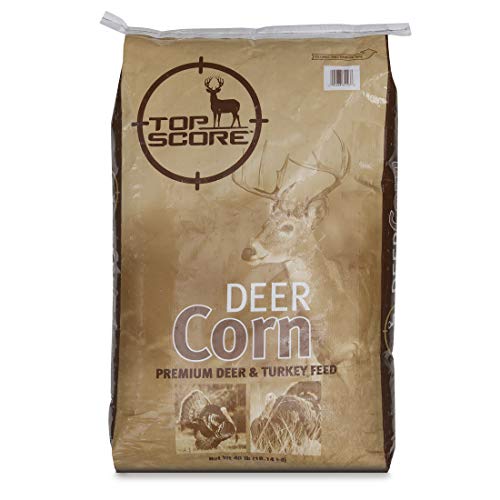
The Best Time to Deer Hunt in Mid-October? When the Farmer Cuts the Corn
Moon phases, weather, and photoperiod can all affect deer movement. However, nothing has a greater impact on deer activity in a single day than when an old John Deere combine mows down a few hundred acres of standing corn. This is beneficial for deer hunters.
Mid-October can be a challenging time to hunt. Although scientific research has debunked the concept of the “October lull,” many bowhunters still struggle to pattern and kill mature bucks in early and mid-October. Several factors contribute to this difficulty.
- In early September, bucks shed velvet, break up their bachelor groups, and switch food sources. The patterns of the summer bucks you saw feeding in beans and alfalfa fields each evening have changed.
- There is increased disturbance in the woods. Deer hunting pressure has been ongoing for about a month in many areas, and bird and small game hunters are also present. Additionally, neighbors may be hanging stands and cutting wood in preparation for deer camp.
- In much of whitetail country, there is an abundance of standing corn that provides both food and cover. If there are puddles or small ponds in the cornfields, deer may not need to leave.
Deer Hunting in Corn Country
When cornfields are harvested, deer must adapt to the new landscape. The disturbance caused by the farmer’s combine machine triggers deer activity. For example, last week my colleague Josh Dahlke from HuntStand Media and I were hunting a property we lease in western Wisconsin. When we arrived, the farmer informed us that he was going to cut a few rows of corn near the field where Josh intended to hunt. We were disappointed but also excited because we knew that deer tend to come out and feed after the cutting is complete. They enjoy eating the waste corn and are often curious. In the three seasons we have hunted the property, we have noticed an obvious increase in deer movement after a corn cutting. This is a sentiment shared by many farmers and deer hunters who hunt around cornfields.
Josh quietly positioned himself in a stand located 60 yards off the cornfield, nestled in the woods. I set up in a similar staging area in the middle of the property. Josh observed the farmer cutting corn for about an hour and a half, expecting little action to occur.

“I hope this is the final lap,” Josh texted me. Then he added, “I guess he decided to do another round. I think I’m out of luck.”
However, just five minutes later, he sent me another message: “I just shot a deer.”
A nice buck had come to the edge of the field to grab a few cobs before the farmer made his next round. When the farmer returned, the buck was spooked and ran into the woods – right towards Josh’s stand. Josh made a 30-yard shot while the buck was still munching on corn.
This story offers a few valuable lessons. Firstly, we should never give up on a hunt. If the wind is favorable, there is always a chance. However, we must remain alert and engaged to seize those opportunities.
Secondly, deer in farm country are accustomed to farm equipment. When a tractor or combine passes by, they typically move into the woods just 25 or 50 yards away. They don’t flee the area. This knowledge can be leveraged when a farmer is cutting their corn. Focus on heavily-used trails leading from cornfields into the woods. Look for popular staging areas within the woods that show signs of fresh rubs and scrapes. These spots can often be more productive than the actual field edges. The times when a farmer is working can also be used to hang stands or set up trail cameras. The farmer’s disruption helps mask the disruption caused by your own activities. However, exercise caution and avoid disturbing secluded bedding areas during this time.
Lastly, it is crucial to maintain good relationships with local farmers. They often possess valuable insights into deer activity that trail cameras cannot capture. If possible, establish communication with farmers in the area to learn about their crop cutting plans and duration. This will give you an advantage over the deer. However, be aware that a farmer’s plans can change frequently due to weather and machinery issues. Adaptability is key when it comes to deer hunting. Be prepared when you hear that combine start up, as it may signal better deer hunting opportunities.

A skilled hunter, dedicated conservationist, and advocate for ethical practices. Respected in the hunting community, he balances human activity with environmental preservation.
